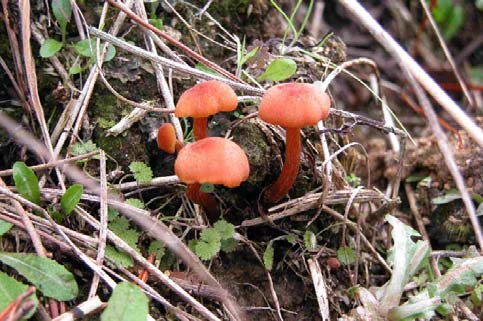PESTS AND DISEASES OF FORESTRY IN NEW ZEALAND
Identification of Micorrhizal fungi using molecular analysis
Scion is the leading provider of forest-related knowledge in New Zealand
Formerly known as the Forest Research Institute, Scion has been a leader in research relating to forest health for over 50 years. The Rotorua-based Crown Research Institute continues to provide science that will protect all forests from damage caused by insect pests, pathogens and weeds. The information presented below arises from these research activities.
From Forest Health News 199, October 2009.
Pinus radiata, in common with other members of the Pinaceae, is highly dependant on mycorrhizal associations for survival and growth. This association between a fungus and the roots of higher plants is a symbiotic one, increasing the mineral and water absorbing capacity of the plant from which the fungus obtains its energy source (carbon compounds) directly. Two major groups of mycorrhizal associations, ectomycorrhizas and endomycorrhizas are recognised, based on whether the fungus grows mainly on the surface of the root or penetrates inside the root.

Pinus radiata is exclusively ectomycorrhizal. The associated fungus forms a continuous sheath or mantle around a rootlet and hyphae extend outwards from the sheath in the surrounding litter and soil. It may also form fruiting bodies above or below ground. Much of the earlier work on identifying the fungal partners of P. radiata mycorrhizas was based on establishing a connection between the identifiable fungal fruiting bodies and the fungi actually forming the mantle, which could not be identified directly. As many mycorrhizal fungi do not form fruiting bodies, this approach limited the amount of information that could be gathered. Molecular methods such as direct sequencing and molecular fingerprinting, developed from the mid 90s on, have largely removed this limitation, making direct identification of mycorrhizal fungi possible.
A research project at Scion investigated P. radiata mycorrhizas in a nursery and four plantation sites using molecular techniques. Seven previously unreported species of mycorrhizal fungi were found: Inocybe sidonia, Pseudotomentella sp., Pseudotomentella tristis, Rhzopogon pseudoroseolus, Rhizopogon luteorubescens, Tomentella sp. and Wilcoxina mikolae. Reassessment, using molecular methods, of the identity of three previously reported mycorrhizal species, Laccaria laccata, Tricholoma pessundatum and Hebeloma crustuliniforme, did not confirm the specific names. It is proposed that they should be changed to Laccaria proxima,Tricholoma sp. and Hebeloma sp.
Molecular methods do have limitations including the availability of sequence data. Despite this, application of molecular techniques has increased the number of identified mycorrhizal associates of P. radiata from 17 species to 28 species.
A paper on this has just been published recently. It can be retrieved through http://www.springerlink.com/content/p3q7126227000784/ or by contacting the author at Katrin.Walbert@scionresearch.com
Katrin Walbert
This information is intended for general interest only. It is not intended to be a substitute for specific specialist advice on any matter and should not be relied on for that purpose. Scion will not be liable for any direct, indirect, incidental, special, consequential or exemplary damages, loss of profits, or any other intangible losses that result from using the information provided on this site.
(Scion is the trading name of the New Zealand Forest Research Institute Limited.)



